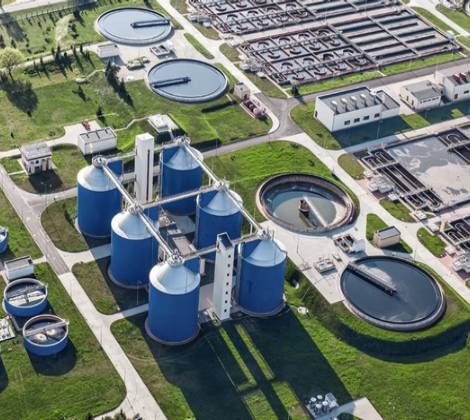SEWAGE TREATMENT PLANT
A sewage treatment plant, also known as a wastewater treatment plant, is a facility designed to treat and purify wastewater generated from residential, commercial, and industrial sources. Its primary purpose is to remove contaminants, pollutants, and harmful substances from the wastewater before it is safely discharged into the environment or reused for various purposes.
The sewage treatment process involves several stages that collectively work to remove impurities and transform the wastewater into an environmentally safe form. At the same time, the specific processes may vary depending on the scale and technology used.
STP plants play a critical role in safeguarding public health and protecting the environment. They effectively remove pollutants and contaminants from wastewater, preventing the spread of diseases, minimizing water pollution, and preserving ecosystems. Regular monitoring, operation, and maintenance of these plants are essential to ensure their proper functioning and compliance with environmental regulations.
The general steps involved in a sewage treatment plant are as follows:
- Preliminary Treatment: In this stage, the incoming wastewater undergoes preliminary treatment processes to remove large objects and debris. This includes the use of screens, grit chambers, and skimmers to filter out items like plastics, rocks, and sticks. The removal of these materials helps protect downstream equipment from damage and ensures smoother operation of subsequent treatment processes.
- Primary Treatment: During primary treatment, the wastewater flows into large settlement tanks, also known as primary clarifiers. Here, the heavier solid particles settle to the bottom as sludge, while lighter substances such as oils and grease float to the surface and are skimmed off. The partially clarified wastewater, also known as primary effluent, moves on to the next stage.
- Secondary Treatment: In the secondary treatment stage, biological processes are employed to further purify the wastewater. The wastewater is aerated and mixed with microorganisms, typically in an activated sludge process or a trickling filter system. These microorganisms break down organic matter and remove nutrients, such as nitrogen and phosphorus, through a process called biological oxidation. The treated wastewater, known as secondary effluent, moves on to the next stage.
- Tertiary Treatment: In some cases, a tertiary treatment stage is employed to further polish the wastewater and meet specific water quality standards. This stage includes additional processes such as filtration, disinfection, and advanced treatment methods like membrane filtration, activated carbon adsorption, or UV disinfection. Tertiary treatment ensures the removal of any remaining suspended solids, bacteria, viruses, and trace pollutants, resulting in high-quality treated water.
- Sludge Treatment: Throughout the treatment process, sludge or solid waste accumulates as a byproduct. Sludge undergoes further treatment, including thickening, digestion, and dewatering processes, to reduce its volume and stabilize it. The treated sludge can then be used as fertilizer, incinerated, or sent to a landfill.
- Effluent Discharge or Reuse: The final treated wastewater, now meeting regulatory standards, can be safely discharged into nearby water bodies like rivers, lakes, or the ocean. Alternatively, depending on local regulations and water scarcity concerns, the treated water may undergo additional treatment processes for reuse in irrigation, industrial processes, or groundwater recharge.

